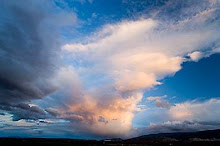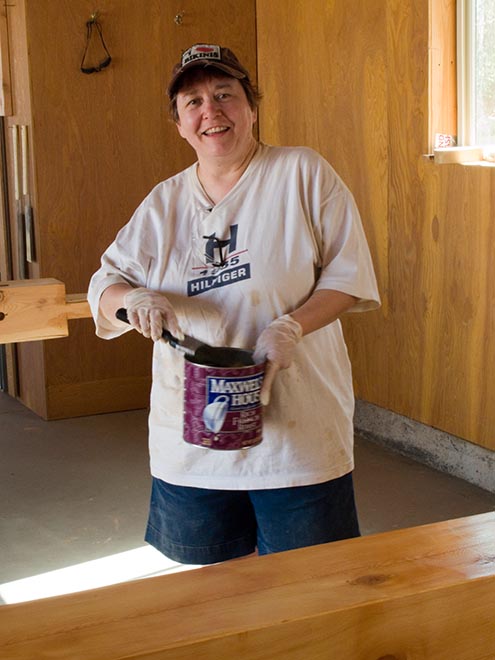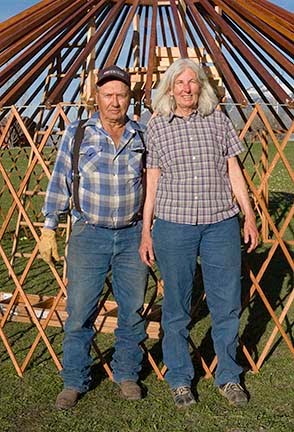Scott and I have been back in Torrey for one week now. However Scott completed a big project here while I was wrapping up loose ends in Logan. He built the adobe wall behind our masonry stove. Our thinking is that our masonry stove will heat our big main room and, at the same time, heat the adobe wall. The warm wall will then heat the air in Scott's office on the other side.
So, in early May, Scott contemplated this stack of 151 adobe bricks, which we made last summer with the help of my brother John's family: Wesley, Casey, Kelli, Jessica, Barbara and John.
First Scott framed an 8-foot X 8-foot wall.
One concern we hoped to address was the stability of such a narrow, tall wall - 5 1/2 inches wide by 8 feet tall. To tie the entire wall together, Scott placed a masonry ladder (a welded-metal lattice) within the mortar every other course. The ends of the ladder were attached to the frame on each side of the wall.
 The mortar recipe was essentially the same mix used in the plaster on
the exterior of the house - high-clay-content dirt from our property, a
little added masonry sand, finely chopped straw and water.
The mortar recipe was essentially the same mix used in the plaster on
the exterior of the house - high-clay-content dirt from our property, a
little added masonry sand, finely chopped straw and water. 































